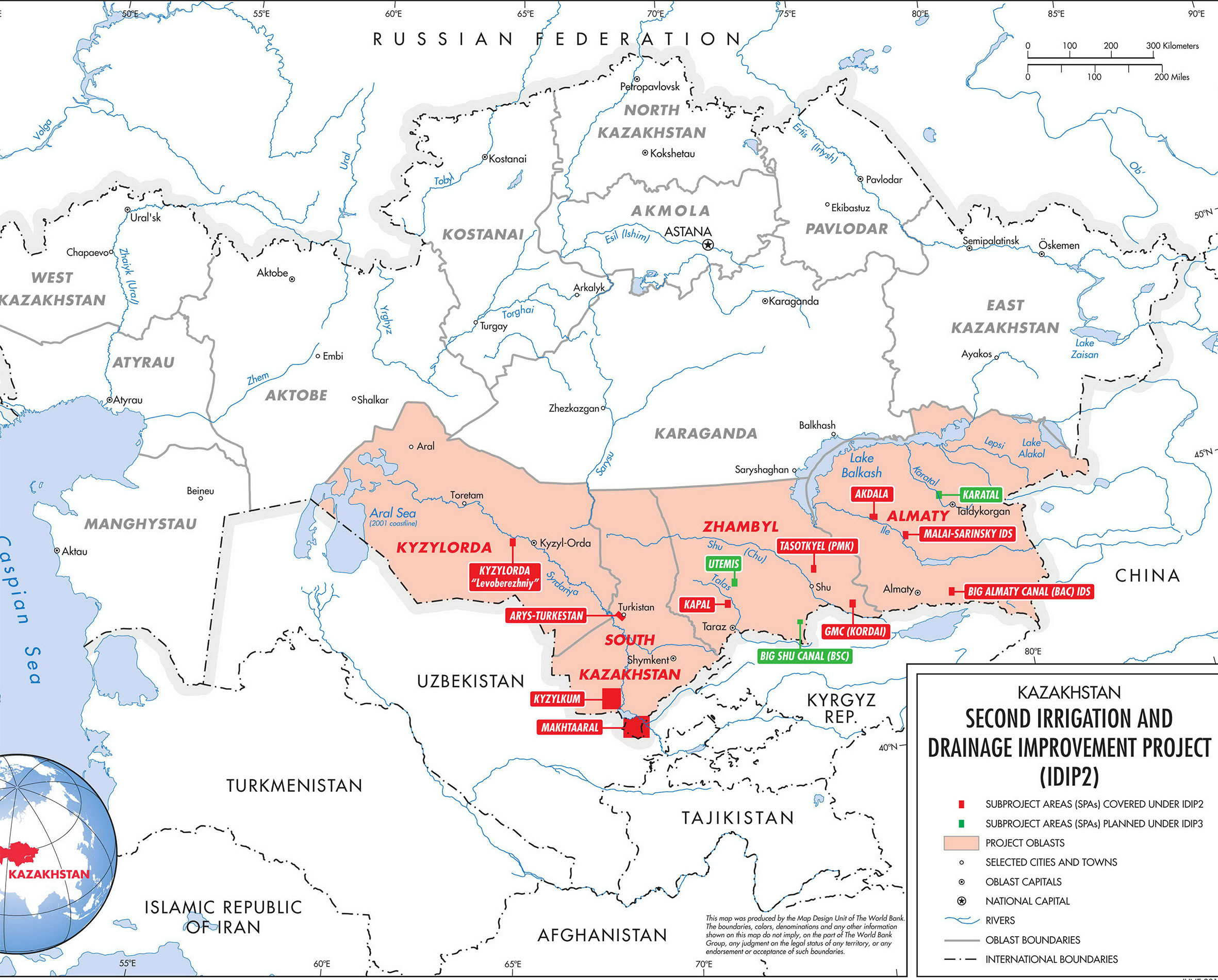
The Challenge
Kazakhstan is a water-deficient country with climate change putting pressure on the volume of water available for use. An increase in irrigated land is possible only with the introduction of water-saving technologies during irrigation.
The project challenge is to accelerate the improvement of irrigated land to improve the efficiency of water use in agriculture and reduce demands on scarce surface water resources. This will help contribute to the further development of the agricultural sector, benefiting the national economy. It is also to improve water supply to approximately 10,000 farms with a command area of 105,000 hectares.
Irrigation and drainage service delivery will be achieved through rehabilitation and modernisation systems, improved management, operation and maintenance (MOM) and improved participation of users in developing and managing the land.
The Solution
The project will introduce modern approaches in infrastructure design, in using information and communication technology to improve irrigation management, in demonstrating modern techniques in farming, and in supporting key regulatory and institutional reforms to modernize the irrigation sector.
Best practise methods have been used to plan, size, optimise, control, and prepare detailed designs of pipe networks and open channel irrigation systems. During project delivery, SMEC offered solutions which were sustainable, innovative and cost-effective through the following approach:
- Sustainability of the system at design, construction stages
- Technical innovations to deliver the best outputs
- Strict adherence to the prescribed specifications, timeline, and budget
- This will be achieved through rehabilitation and modernisation of Irrigation and Drainage (I&D) systems; improved systems management, operations, and maintenance; a more efficient use of irrigated lands; and increased participation of users in the development and management of I&D systems.






SMEC’s role is also to strengthen the capacity of farmers and farm managers in efficient water management and sustainable agriculture production facilities. Training is being provided to the irrigation water suppliers, the agriculture cooperatives, and farmers to ensure optimised efficiency across the usage chain.
In delivering the project SMEC has also considered lessons learned under the first Irrigation and Drainage Improvement Project (IDIP-1), supported by the World Bank in 1996-2004. The project was implemented in several oblasts with encouraging results, involving rehabilitation of irrigation and drainage infrastructure and related improvements in water management and systems operations and maintenance.
SMEC’s capabilities in irrigation have been established and refined through research and development conducted in direct association with water and irrigation authorities and utility providers. The project involved multidisciplinary teams and experts for optimising environmental, economic, and social benefits.
An interactive Project Management Information System (PMIS) has been handed over to the client as a value addition to the services agreed. An ‘Agricultural Dashboard’ helps build institutional capacity to effectively maintain and monitor the water requirement and supply to the crops, which can help in reduction of wastage in water supply and water losses. The government can even monitor the revenue from the crops usage and effectively plan the next cropping pattern based on the seasoning and geographical data.
Impact
The modernisation program will improve irrigation and drainage service delivery to approximately 10,000 farms located in the Almaty, Kyzylorda, South Kazakhstan, and Zhambyl Provinces. The project with 2,547km of irrigation canals helps irrigate over 105,000 ha of farmland, serves 157,364 people and acts as the primary lifeline for the region in providing irrigation and drainage facilities.
The rehabilitated and modernized irrigation and drainage systems on the area of more than 100,000 ha will ensure timely and adequate water supply to farmers and help save 300 million cubic meters of incremental irrigation water per year.
Better use and management of irrigation infrastructure will help develop the agricultural sector of Kazakhstan to the benefit of the national economy and rural people.
During the process of development of the irrigation system especially during the construction and installation works, thousands of jobs are created. This will also give rise to development of other related industries that would contribute to the production of building materials, supply of technological equipment and machinery etc. Post completion further jobs will be created in the agriculture sector.
Outcomes include:
- Accelerating the improvement of irrigated land to improve the efficiency of water use in agriculture and reducing demands on scarce surface water resources
- Strengthening institutional capacity of the irrigation system management and operators
- Increasing capacity of the agriculture cooperatives in irrigation
- Enhancing existing wetlands and terrestrial vegetation resources
- Minimizing land disturbance to only that necessary to rehabilitate I&D Channels
- Improving habitat connectivity, value, and vegetation community function.
- Water efficiency
- The annual volume of agricultural production will rise extensively.
The project is currently under construction and is expected to be completed in 2023.





